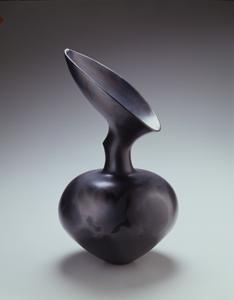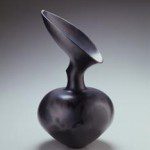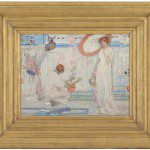Museums in Winter: Art Without the Crowds
By • February 18, 2016 0 1026

As we wring the slush off our pant legs and break up the sheets of snow that cover our vehicles, doorsteps and walkways, just getting to work and back seems bad enough. How does this sound: trudging through knee-deep puddles of dirty ice water and pinballing around taxicabs trapped in lawless traffic patterns dictated by the randomly zigzagging pathways scooped out by overworked DPW drivers … all to visit an art museum? Show of (frostbitten) hands?
I would imagine that, over the next two weeks, museums around Washington will see their lowest attendance numbers in the past few years. With public transportation struggling to get back on schedule and most of us behind on work (and probably domestic chores), a museum excursion is most likely the furthest thing from anyone’s mind.
However, if you have the time, that might also be the best reason to go to a museum right now: there’s a very good chance you will have the place to yourself. So if you’re willing to brave the elements and journey downtown, here are two stellar exhibitions to take in during the hushed and intimate state of D.C.’s museums in winter.
‘The Lost Symphony: Whistler and the Perfection of Art’
Arthur M. Sackler Gallery
Through May 30
From 1867 until 1877, the American-born artist James McNeill Whistler painted, scraped, repainted and finally destroyed his large-scale painting “The Three Girls.” From the outset of its creation, he had envisioned it as his masterpiece, tying together all of his artistic philosophies and stylistic innovations.?
“The Three Girls” was a monumental painting, meant to hang in Whistler’s now-famous Peacock Room — in the same location where the infamous mural of the fighting peacocks currently resides. Yet Whistler was never satisfied with the work. His mother Anna (the subject of Whistler’s most famous work, “Arrangement in Grey and Black No. 1,” popularly titled “Whistler’s Mother”) wrote that the painting eluded him precisely because “he had tried too hard to make it the perfection of art.”
All that remains of “The Three Girls” is a rescued fragment of the large unfinished painting, salvaged from his studio; numerous studies; and the frame that Whistler decorated specifically for the painting. These are among the clues on display in this unique show at the Sackler, hinting at the masterpiece that might have been.
The exhibition also includes Whistler’s “Princess from the Land of Porcelain,” which has not been shown outside the Peacock Room since 1904. (The Peacock Room, and the entire Freer Gallery, are closed for renovations through the spring of 2017.)
The destruction of “The Three Girls” — called “the lost symphony” in the exhibition title because it was to be part of Whistler’s series of “Symphony in White” paintings — and the afterlife of its frame illuminate the artist’s preoccupation with patronage, payment and professional reputation. These themes are at the heart of the complementary Sackler exhibition, “Peacock Room REMIX: Darren Waterston’s ‘Filthy Lucre,’” which reimagines Whistler’s extraordinary room “in a state of decadent demolition.”
‘Pathmakers: Women in Art, Craft, and Design, Midcentury and Today’
National Museum of Women in the Arts
Through Feb. 28
In the 1950s and ’60s, an era when painting, sculpture and architecture were dominated by men (yes, even more so than today), women artists had a considerable impact working in alternative materials such as textiles, ceramics and metals. Pioneers in these fields — including Ruth Asawa, Edith Heath, Sheila Hicks, Karen Karnes, Dorothy Liebes, Alice Kagawa Parrott, Lenore Tawney, and Eva Zeisel — became influential designers, artists and teachers. They helped to shape the way art was made and understood in the decades that followed, and their work continues to inspire artists, as this exhibition makes clear.
“Pathmakers,” at the National Museum of Women in the Arts, presents dynamic women designers and artists from the mid-20th century and today. It is a diverse group, ranging from artists represented by New York galleries to participants in the Santa Fe craft scene (Magdalene Odundo’s earthenware vessels are standouts) to creators of large-scale art for General Motors, the Ford Foundation and other high-profile organizations.
Among the contemporary female artists and designers whose work builds upon that of midcentury predecessors are Polly Apfelbaum and Michelle Grabner, whose installations center on woven and knitted patterns; Anne Wilson, who focuses on the processes of textile manufacture; Magdalene Odundo and Christine Nofchissey McHorse, who adapt traditional techniques while absorbing global influences; furniture and fixture designers Vivian Beer, Front Design and Hella Jongerius; and Gabriel Ann Maher, whose work looks at the ways gender is constructed by the clothes we wear.
- Magdalene Odundo’s “Untitled #10,” 1995. | Courtesy of the Newark Museum.



